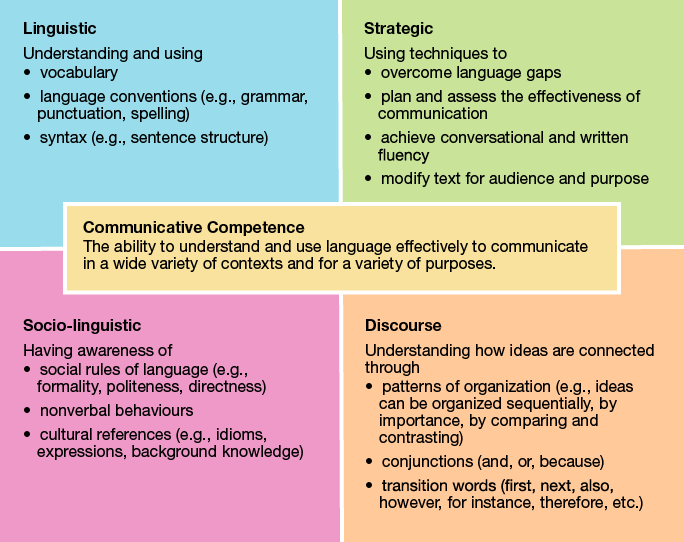Understanding the Acquisition of English as an Additional Language
Working Towards Communicative CompetenceOne goal of English language learners and their teachers is for students to develop communicative competence in listening, speaking, reading, and writing. Students who have developed communicative competence can understand and use language effectively to communicate in a wide variety of contexts and for a variety of purposes. They demonstrate control over grammar, vocabulary (conversational and academic), turn-taking skills, timing and directness, and the ability to use one’s voice and body language in culturally and socially acceptable ways. Communicative competence also involves taking the context of a situation into consideration when communicating. Behaviours and strategies that are appropriate in one context might not be appropriate in another context, and communicative competence entails knowing the difference and applying that knowledge. A student’s communicative competence can be divided into the following four areas. 
For more information, see Communicative Competence by Language Strand. See also the Alberta K–12 ESL Proficiency Benchmarks, which can be used to determine an English language learner’s level of language proficiency, using communicative competence as a framework. |

